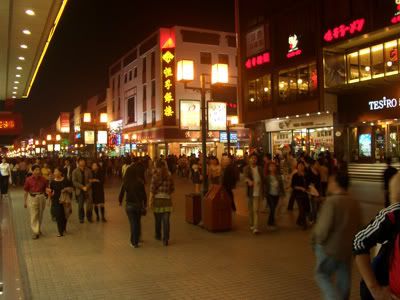Today we will be visiting the city of Yangzhou (扬州), which is 1 hr 45 mins away from Wuxi by bus. We left the hotel at 8.55am and arrive at the train station around 9.05am. The bus station is just next to the train station. Based on their daily schedule, the next bus for Yangzhou departs at 9.30am. That left us with around 15 minutes of waiting time before departure. This is the first time I am taking the long distance bus. The cost is 60RMB for this one way trip, definitely more expensive than the train (to Zhen Jiang) and bus (to Yang Zhou) combination. But the hassle free trip is really worth the cost. The bus station is pack with lots of people as seen in the photo below.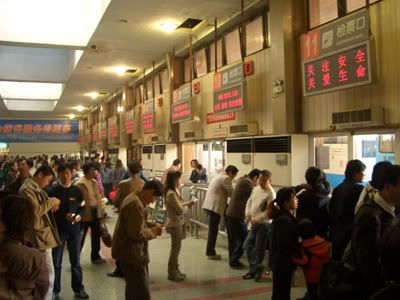
After we arrived at Yangzhou bus station, we bought the final return ticket for the day which departs at 5.55pm. We hop on a cab and we are enroute to our first stop - Da Ming Si (大明寺).Da Ming Si (大明寺)
The entrance ticket to Da Ming Si is 45RMB each. Here is the main entrance that greeted us after we alighted from the cab.
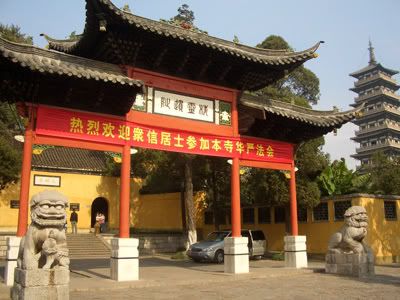
As with all Chinese temples, once we are past the entrance hall which has the 4 heavenly gods, Maitreya Bodhisattva and Pu Tuo Bodhisattva, we will be at the main temple grounds and the main hall, the Da Xiong Bao Dian (大雄宝殿).
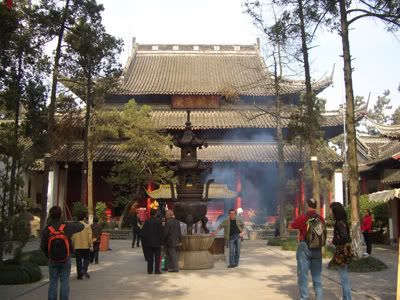
Here is something which I find unique to Yangzhou, in which each of the animals in the Chinese zodiac is assigned a Buddha/Bodhisattva protector. Which one is yours?

To the west of the monastery compound is the West Garden. There is large lake in the centre of the garden with yellow tree leaves at its edges indicating the start of autumn.
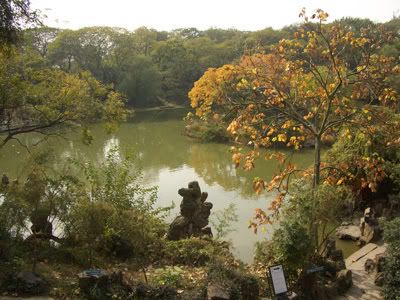
Here is another view from the opposite side of the lake. We can observe the 5th Spring (as recorded by the Tea Sutra) to the left, a pavilion in the middle and a large rock bonsai to the right.
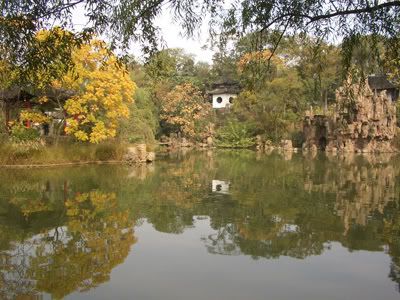
Here is a scene of the pagoda zooming in from behind which casts a clear reflection onto the lake below.
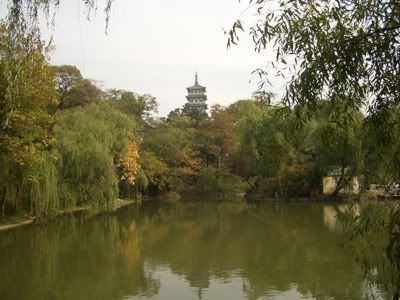
The main pavilion where the 5th Spring is drawn.
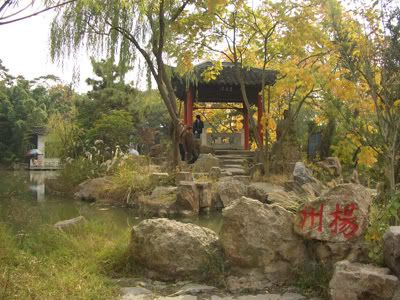
Behind the main hall is the Jian Zhen Memorial Hall (鉴真纪念堂). The memorial hall was constructed 20 years ago and is mirrored after a Japanese Temple. Jiang Zhen is highly regarded by the Japanese for his determination in bringing the Buddhist precepts to Japan around 1,200 years ago. He attempted 6 times to travel to Japan and succeeded during the last attempt. Thereafter he spent the final 10 years of stay introducing the precepts, teachings and Chinese culture to Japan.

Here is a 9-storey pagoda to the East wing of the temple compound. At the entrance to pagoda are 5 Jade Buddhas donated by Myanmar. The standing Buddha as seen in the photo below was contributed by the Mayor of Yangon in 2005 while at the first floor of the pagoda house 4 seated Buddha representations.
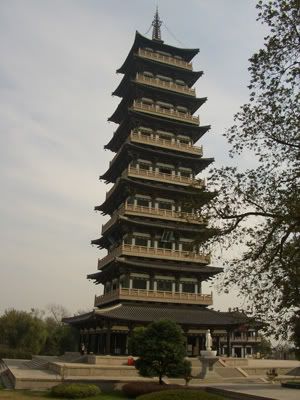
At the top of the pagoda, visitors can catch a paranomic view of the surrounding environs. The Shou Xi Hu (瘦西湖) to the Martyr memorial ground (below) can be easily seen.
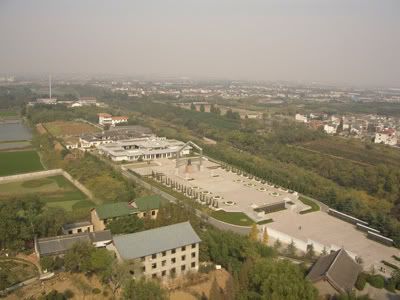
Lunch Time
One of the most important thing to do in Yangzhou is to try out Yangzhou local crusine. Here we are at the most busy restaurant in Yangzhou food street.
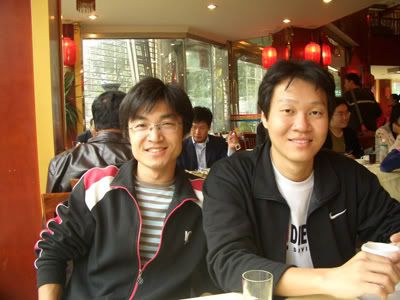
One of the famous local dish is the Lion's Head (狮子头) which is basically large meat balls. It can be seen at the bottom right hand side of the photo below. It cost 8RMB each. The dish to the top is one a Taihu specialty. The one to the left is crab meat mix with jelly (maybe).
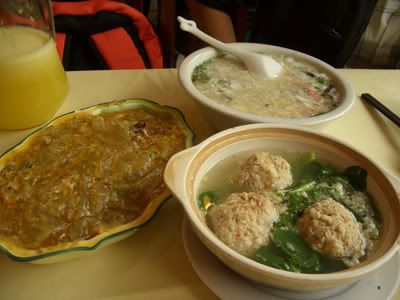
Here is the original authentic Yangzhou Fried Rice. It taste really good and is different from the Yangzhou Fried Rice bought elsewhere.
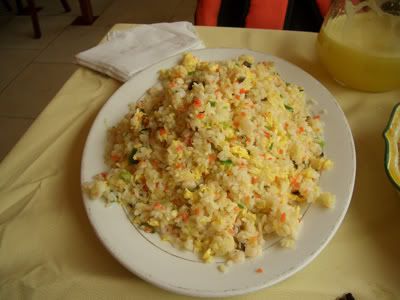
Shou Xi Hu (瘦西湖)
Here is a map of Shou Xi Hu. We will be coming in from the North entrance which is at (1). Thereafter proceed downwards, past the 5 Pavilions Bridge (五亭桥) at (2), and proceed to the White Pagoda (3). We will turn westwards towards (4) where the 24 Bridges are (二十四桥). And finally looping back to (5) which is the Small Golden Hill (小金山) and (6) which gives a picturesque view of the entire lake.
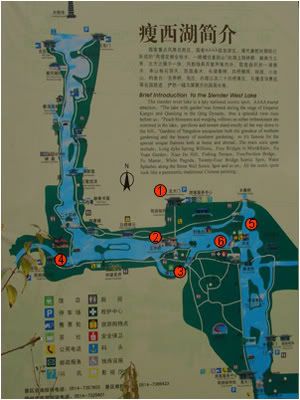
Past the entrance we have the 5 Pavilion bridge.
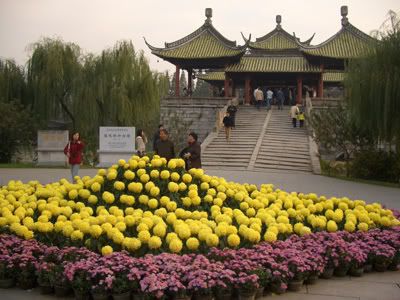
Here is a photoshot of the white pagoda whose design is based on a typical Tibetan pagoda.
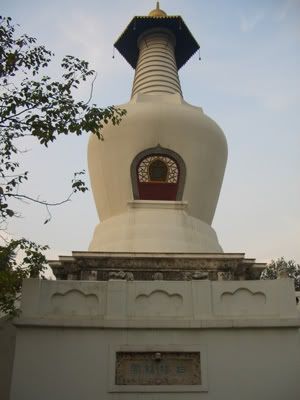
Next to the White pagoda is a nunnery. It is the first time I have seen a nunnery in China. What I have noticed is that all the nuns in the temple don't have to shave their heads; though they wear the grey robes.

When we are around the 24 bridges, we caught sight of a musician playing a classical chinese instrument; giving the whole area a peaceful feel to it.
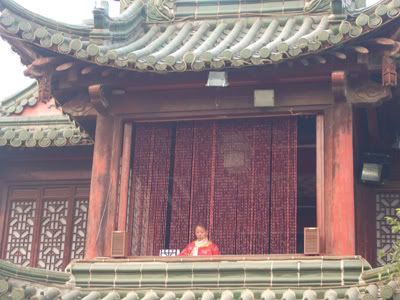
Here is a photo shot of the 5 Pavilion bridge at sundown.

The pavilion at the top of small Golden Hill. It is only a one minute climb up the gentle slope to reach this area.
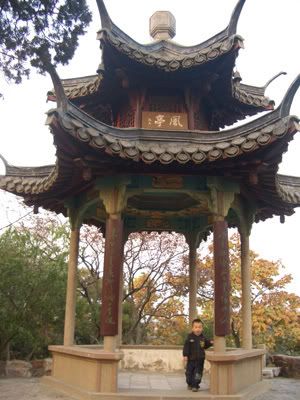
Just next to small golden hill is a great spot where photographers can catch a few sights in one photo. Here we can see the White pagoda and the 5 Pavilion bridge. It is also said that this is also the place where the Qing Emperor Qian Long caught a fish at first try.
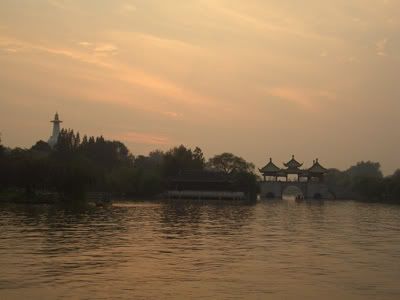
Here are the Yangzhou's flowers.
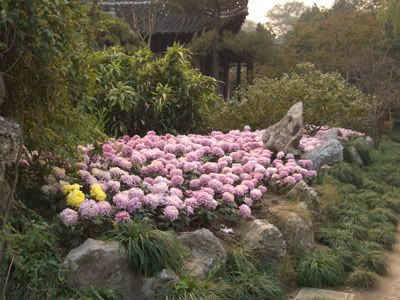
Outside the Shou Xi Hu is a large toy market with lots of mega dolls.
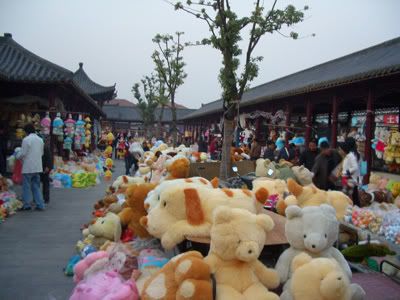
As I am bringing a fellow friend from Korea to Suzhou this time round, I will be visiting Huqiu Shan again. This is the top sight in Suzhou and it is a must see for all visitors to Suzhou. My Suzhou 1 entry already contain a vast amount of information regarding Huqiu Shan. This time round I will just largely skip the descriptions and go for those I have left out. The entrance ticket to Huqiu Shan is also cheaper (40RMB) as it is considered to be off-peak season now: November till March. Huqiu Shan (虎丘山)Here is the official entrance to Huqiu Shan. The cab dropped me off somewhere to the front the last time so I kind of miss this entrance. 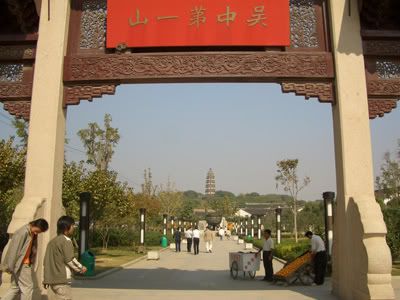 A photo shot of the leaning tower with me in it. This the shot which I have very much wanted to take while there. I have a similar shot of the Leaning Tower of Pisa, trying to hold on to the tower before it falls.
A photo shot of the leaning tower with me in it. This the shot which I have very much wanted to take while there. I have a similar shot of the Leaning Tower of Pisa, trying to hold on to the tower before it falls.
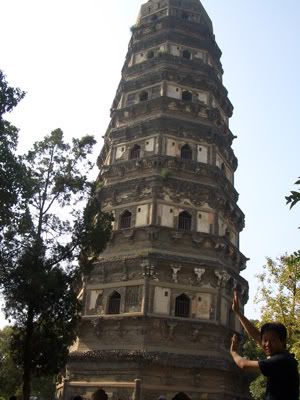
We left the train station at 10am but was unfortunately delayed at a mid-way stop between Wuxi and Suzhou for 30 minutes!!! Nevertheless, we are able to change our plan easily with us swapping the first and second sight for the third sight. Thus when we got to Huqiu Shan at 11.40am, it was almost time for lunch. There are many food tents that serve local food to the visitors. It is quite affordable and we are able to sample 3 varieties of the local specialities at 14RMB.
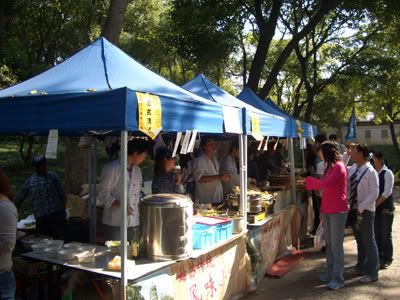
The main highlight of Huqiu Shan is actually the daily performance at 1pm. By the time we had finished our lunch, the timing is perfect and we are able to catch the 40 minutes show.
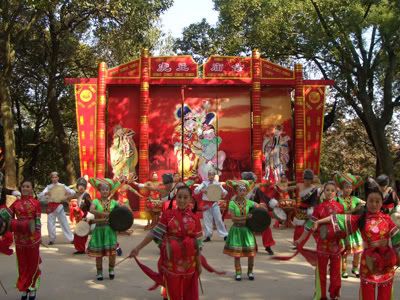
Silk Museum (丝绸博物馆)
Our second stop is to the Silk Museum. In it contains a chronological history of sericulture in China and how it originated 5,000 years ago from a concubine of Shi Huang Di. The many tools and archaeological findings are showcase in the museum. Suzhou is consider to be one of the foremost and main production of China's silk. There are two other centres of massive silk production back in those days: Hangzhou and Chengdu. History of the silk road and the sea trade are also drawn in vivid details. But what really impress me the most are the live silk worms on display in the museum. It shows the worms in its papae stage on a large pile of leaves. It is their standard diet. The worms are not that noticeable from afar and visitors can just easily miss this section as the worms are pretty 'slow moving'.
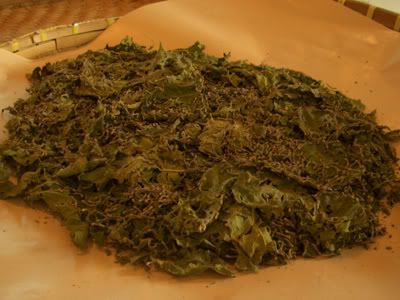
We have another area next to it where the worms have grown into large 'caterpillars'.
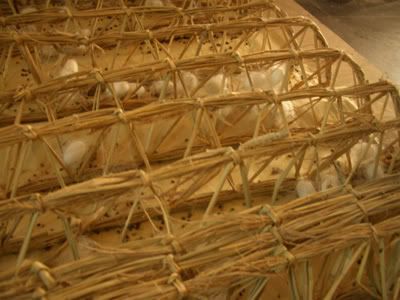
I managed to get a quick shot of the metamorphasis of the silk worm to share with all. This is the most fascinating part of the whole museum!
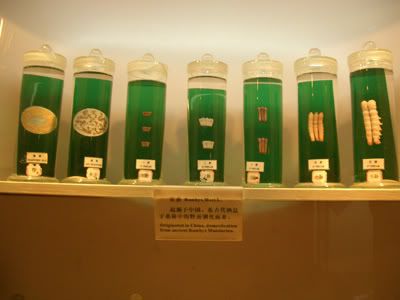
Bei Si Ta (北寺塔)
A 3 minutes walk across the silk museum is Bei Si Ta. It is the tallest Pagoda south of the Chang Jiang river. From the train station, this is also the most prominent sight from afar.
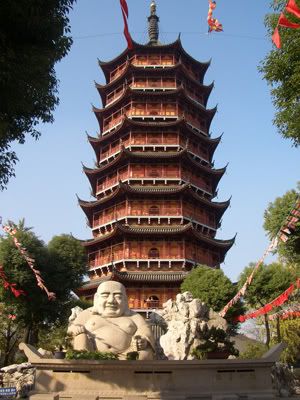
The pagoda is 9 storeys high and we climbed all the way up. It has become almost standard procedure that for every pagoda that is opened to us, we will climb all the way to the top. Hopefully there will not be an impossibly high pagoda for us to scale. From the top, it gives a remarkable view of Suzhou city and its environs.
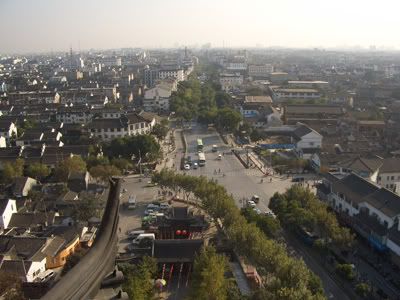
Behind the pagoda is the main temple hall and it is famous for its 7 Buddha statues. I stopped by there for a few minutes, listening to the story presented by a guide, before moving on.
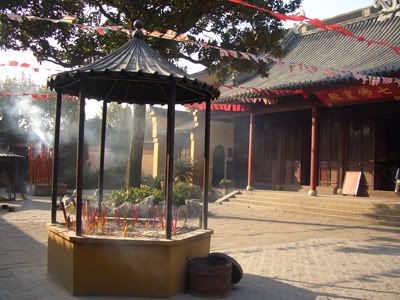
Zhou Zheng Yuan (拙政园)
The fourth stop is to visit the largest and most famous garden of Suzhou, the Zhou Zheng Yuan. Entrance ticket comes at 50RMB. This garden is really impressive. There are lakes against a vast backdrop of pavilions, trees, flowers and rock formations.
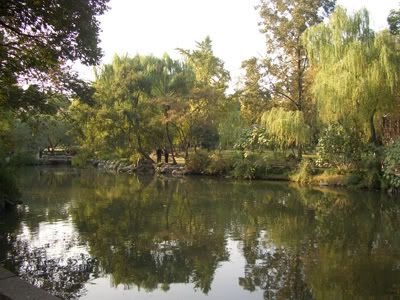
I am quite captivated by this beautiful garden design just a minute walk from the entrance. This should be a new addition to the garden but the flowers are simply dazzling.
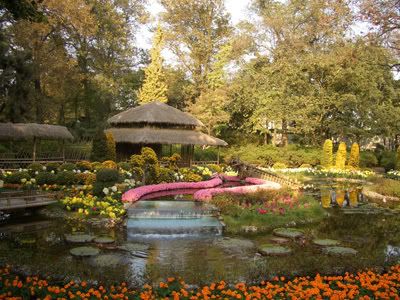
This is the most wanted photo sight in the whole of the garden. A lake in the middle with the pagoda looming in the background, to the side of the lake are pavilions and garden trees.

There is a bonsai area at the end of the garden.
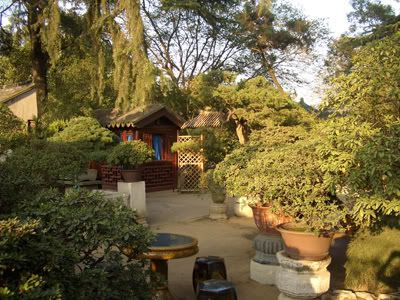
And a super big vase...
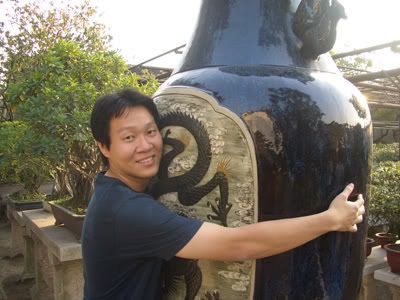
All the trees are marked with their name, their age. There is this hollow tree where visitors can just climb in.
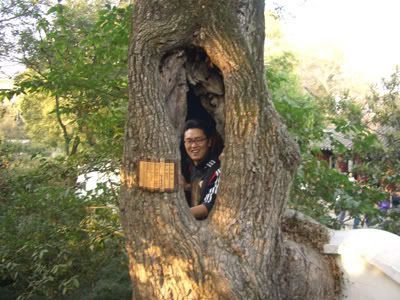
Shizi Lin (狮子林)
The only thing famous about Shizi Lin is the rock bonsai which is said to resemble the lion. There is a Buddhist history behind it. The picture below show the rock bonsai. Can you identify 9 lions in there?
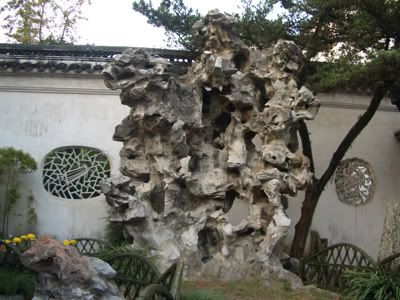
This is a standard ground design for many of the Suzhou houses. The guide mention that this is actually a representation for the word 'Fu' (福).
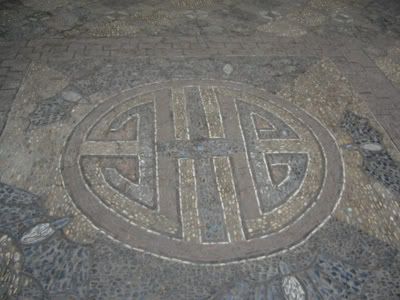
The Shizi Lin is a garden renown for its many rock bonsai and its pavilions.
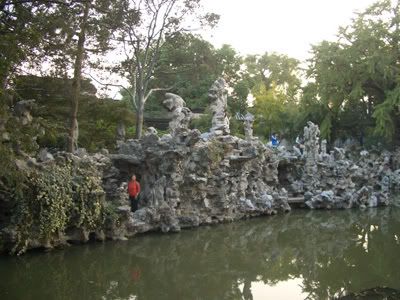
Shopping at Guan qian Jie (观前街)
The last stop for the day is shopping at Suzhou's Guan qian jie. My friend wanted to get some sports gear, so here we go.
While window shopping, I came upon this interesting restaurant that serves Xinjiang crusine. I have always wanted to try Xinjiang cursine but so far is unable to find one that serves purely Xinjiang food. Upon seeing it, I just grab the chance and went for it. We ordered the main Xinjiang plate, barbeque sticks and Mutton soup, the standard diet of the 'Xinjiangers'. Well, it was great!! Somehow, their crusine reminds me of the food back at home.

Here is a night scene shot of Guanqian Jie at night
